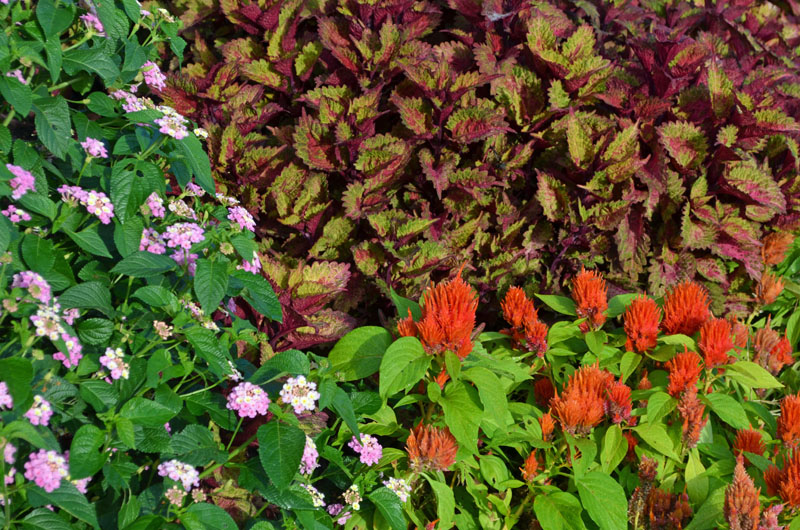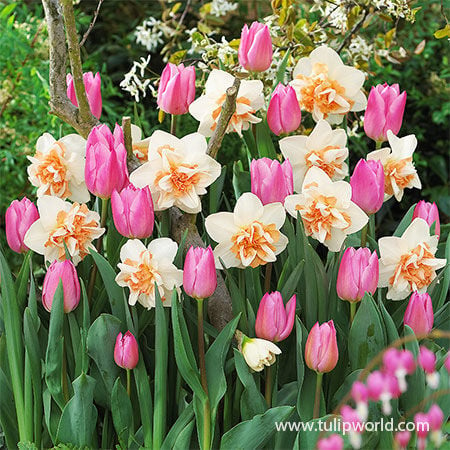The Ultimate Guide To Companion Planting
The Ultimate Guide to Companion Planting
Companion planting is a gardening technique that involves planting certain plants together to benefit each other. This can be done to attract pollinators, deter pests, improve soil quality, or simply to add visual interest to your garden.
There are many different theories about how companion planting works, but some of the most common benefits include:
- Attracting pollinators: Many flowers and herbs attract pollinators, such as bees, butterflies, and hummingbirds. These pollinators help to pollinate your plants, which leads to a better harvest.
- Deterring pests: Some plants have strong scents that can repel pests. For example, marigolds are often planted near tomatoes to deter tomato hornworms.
- Improving soil quality: Certain plants can help to improve the soil quality in your garden. For example, legumes, such as beans and peas, fix nitrogen in the soil, which can benefit other plants.
- Adding visual interest: Companion planting can also be used to add visual interest to your garden. For example, you could plant tall sunflowers behind shorter plants, such as carrots or lettuce.
If you're interested in trying companion planting, there are a few things you need to keep in mind. First, you need to do some research to learn which plants are compatible with each other. There are many resources available online and in libraries that can help you with this.
Once you know which plants you want to plant together, you need to consider the spacing requirements of each plant. Some plants need more space than others, so you'll need to make sure you leave enough room for them to grow.
Finally, you need to consider the sunlight and water requirements of each plant. Some plants need full sun, while others prefer partial shade. Some plants need a lot of water, while others are more drought-tolerant.
With a little planning, companion planting can be a great way to improve your garden's productivity and beauty.
Here are some of the most popular companion planting combinations:
- Beans and corn: Beans fix nitrogen in the soil, which benefits corn. Corn provides shade for beans, which helps to keep them cool.
- Carrots and onions: Onions repel carrot flies, which can damage carrots. Carrots help to keep onions from bolting.
- Marigolds and tomatoes: Marigolds repel nematodes, which can damage tomatoes. Tomatoes provide support for marigolds.
- Peas and lettuce: Peas fix nitrogen in the soil, which benefits lettuce. Lettuce shades peas from the hot sun.
- Sage and cabbage: Sage repels cabbage moths, which can damage cabbage. Cabbage provides shade for sage.
Here are some tips for companion planting:
- Do your research: Before you plant any plants together, make sure you do your research to learn which plants are compatible with each other.
- Consider the spacing requirements: Some plants need more space than others, so make sure you leave enough room for them to grow.
- Consider the sunlight and water requirements: Some plants need full sun, while others prefer partial shade. Some plants need a lot of water, while others are more drought-tolerant.
- Experiment: There's no one-size-fits-all approach to companion planting. Experiment with different combinations to see what works best in your garden.
Companion planting is a great way to improve your garden's productivity and beauty. With a little planning, you can create a thriving garden that is beneficial to both you and the environment.
Are you looking for beautiful and harmonious plant combinations for your garden? If so, you'll want to visit Gardenia Inspiration. This website is a wealth of information about plants that grow together, including their complementary colors, textures, and heights.
Whether you're looking for a sunny spot or a shady corner, Gardenia Inspiration has the perfect plant combinations for you. You'll find everything from classic combos like lavender and roses to more unusual pairings like hostas and ferns.
In addition to providing plant combinations, Gardenia Inspiration also offers tips on how to care for your plants. So whether you're a beginner or a seasoned gardener, you'll find everything you need to know on this website.
So what are you waiting for? Visit Gardenia Inspiration today and start planning your beautiful and harmonious garden!
FAQ of plants that grow together
Q: What are companion plants?
A: Companion plants are plants that are beneficial to each other when grown together. They may help to attract beneficial insects, repel pests, or improve the overall health of each plant.
Q: How do I choose companion plants?
A: There are a few things to consider when choosing companion plants. First, you need to consider the plants' needs in terms of sunlight, water, and soil type. Second, you need to consider the plants' growth habits. Some plants, such as tomatoes, need a lot of space to grow, while others, such as lettuce, can be grown in close proximity. Finally, you need to consider the plants' aesthetic appeal. You may want to choose plants that complement each other's colors or textures.
Q: What are some examples of companion plants?
A: Here are a few examples of companion plants:
- Marigolds and tomatoes: Marigolds help to repel pests that attack tomatoes, such as aphids and whiteflies.
- Cucumbers and beans: Beans fix nitrogen in the soil, which benefits cucumbers. Cucumbers also provide shade for beans, which helps to protect them from the sun.
- Potatoes and nasturtiums: Nasturtiums attract beneficial insects that help to control pests that attack potatoes.
- Lettuce and carrots: Lettuce shades the roots of carrots, which helps to keep them cool and prevents them from bolting.
- Herbs and flowers: Many herbs and flowers can be grown together to create a beautiful and productive garden. For example, you could plant basil, oregano, and thyme with lavender, marigolds, and sunflowers.
Q: How do I plant companion plants?
A: When planting companion plants, it is important to follow the instructions on the plant labels. However, there are a few general tips that you can follow. First, plant the companion plants close together so that they can benefit each other. Second, plant the companion plants in the same type of soil. Finally, water the companion plants regularly and fertilize them as needed.
Image of plants that grow together
5 different images of plants that grow together from Pinterest:
- Coleus and lantana: These two plants are both tropical and love full sun. They have colorful foliage that looks great together.

- Zinnias and marigolds: These two annuals are both easy to grow and attract butterflies. They come in a variety of colors, so you can mix and match to create a beautiful border.

- Sage and lavender: These two herbs are both drought-tolerant and deer-resistant. They have a lovely fragrance that will fill your garden with a sweet scent.

- Hostas and ferns: These two plants are both shade-lovers. They have beautiful foliage that will add depth and interest to your shady garden.

- Tulips and daffodils: These two spring bulbs are a classic combination. They come in a variety of colors, so you can create a beautiful display in your garden.

Post a Comment for "The Ultimate Guide To Companion Planting"